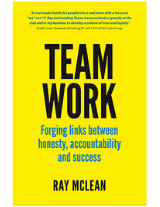Stewarding a successful merger between one or more organisations is a big challenge. People, structures and processes from the different companies have to be combined and aligned, and responses to the change have to be managed.
I recently supported a long-term client with a merger between three engineering / construction companies. As a heavily mechanics-focused industry, with some troublesome relationships already existing between the three, the MD knew he would need support with the cultural aspects of bringing three teams together. He engaged me to support the merger and work with the new teams on an ongoing basis to build their new culture of high performance.
Here is what I’ve learnt from this process so far about making a merger work.
Key steps for leaders
#1. Surround yourself, and quickly, with good leaders who can support you. Then get aligned on what you’re doing and where you’re headed. What is the purpose of the merger? Create an environment where people can challenge, be open and share feelings. Remember, everyone is adjusting. Build trust with your leaders.
#2. Agree on how you’re going to behave as a leadership team. A framework for behaviour will not only align the team, but help you navigate your way through tricky situations as the merger takes hold. Having agreed behaviours for the leadership team will help you to display a consistent approach which in turn will help to bring more staff on board with the change.
#3. Communicate clearly and with transparency. Engage your wider team with the change. They need to understand why, from a business perspective, but also how it will impact them. During change, people can become insecure, protective, stubborn and anxious. Your leaders are vital in helping you sell your message of change and transition. The message must be clear, consistent and positive.
#4. Show compassion and understanding. Listen, get out and talk to your people. Value the history, respect where people are coming from and how they feel. People don’t like change; loyalty is a great quality but it can manifest itself into unproductive behaviour that will hold your team back. Find those in the team outside leadership/management who have influence and get them on board. They will be invaluable.
#5. Move quickly. This might seem like it goes against #1-4, but you should be able to do both if you do them right. Be clear and take action quickly, but not so quickly that people can’t keep up or don’t know what/why things are happening.
#6. Be patient. Some team members will take time to adjust and leaders will need to adapt their own style to suit the new situation, they can’t just rely on how they have led in the past. Don’t expect it will be ‘done’ in 12 months – if people have built up habitual behaviours over many years they will need time and support to change them. Adjust how you lead/communicate according to the situation.
#7. Be prepared. Some people in your team won’t be up for the change and will leave. But, if you’ve completed the steps before this, most of those who should hang around (and let’s face it, those who you want to stay), will.
#8. Be open to using different skills and ideas. You may be used to doing things a certain way in the past, but change brings new ideas from team members and the opportunity to demonstrate new skills. Be open to using them. If you as a leader are willing to change the way you’ve done things in the past, you are setting the expectation among your staff that you want them to do the same.
#9. Streamline your systems and processes. Do what’s best for the new business. Don’t feel as though you have to start from scratch (or worse yet, combine different versions of a process into one incredibly long and cumbersome one) for fear of showing favouritism. Create your new process from the existing bits that work and roll it out – make iterative improvements as you test it out if you need to.
#10. Show your vulnerability. A merger is a big job, no matter the size of the companies involved. More than ever, as leaders, it’s ok to get a bit stuck sometimes – this is new ground for everyone. This is another reason your leadership team is so important. Talk to them – be vulnerable and let them help.
#11. Include all parts of the business in the transition. It might seem unnecessary to say it, but once you get the momentum of change going at the Leadership/Management end of the business, it’s the people who are on the ground, who deliver the product, who can get left behind. Go back to Step #3 – engage with your WHOLE team. There will need to be a plan for how the change will be rolled out; use your managers and your influencers to make sure you’ve included those who deliver the work in it.
#12. Review and reward. Set aside time regularly and often to review how you’re going. There will be plenty of learning opportunities and whilst it can be easy to get caught in the momentum of implementing change, take time to reward what you want to see more of and the little wins. Go back to the behaviours you agreed on early – how are you/your team going against those? Use those as a benchmark to support you through the end to end process.
Read more from Leading Teams about managing change:
- How new executives can be a catalyst for cultural change
- 3 common obstacles to change and how to overcome them
Martine joined Leading Teams in 2008 after an 11 year teaching career. Martine is a Facilitator/Partner based in Melbourne.
Learn more about Martine.




